Despite their effectiveness, HVAC systems can inflate your utility bills whether you’re using them for heating or cooling your home. Our guide to the best 3 ton heat pumps will help you find a more energy-efficient way to control the temperature in your home throughout the year.
Conventional air-source heat pumps aren’t an ideal heating solution unless you create a hybrid system by pairing them with gas furnaces, as they lose their ability to keep a space warm once the outside temperatures drop below 40F.
Differentiating between different types of heat pumps and understanding their sizes requires some background knowledge.
So, in this guide to the best 3 ton heat pumps, we’re going to supply you with the information you need to find the model that will enable you to regulate the temperature in your home with ease.
Top 5 3 Ton Heat Pumps
| Model | SEER | Noise Level | Price range |
| DAIKIN DZ20VC | 21 SEER | 56dB | $$$ |
| York Affinity YZV | 20 SEER | 54dB | $$$$ |
| RUUD Econet™ Ultra Series Heat Pump | 20 SEER | Up to 70dB | $$$ – $$$$ |
| Amana ASZC18 | 18 SEER | 72dB | $$$ |
| Comfortmaker Ion™ CSH6 | 16 SEER | 68dB | $$$$ |
The importance of getting the right heat pump size
The heat pump’s maximum coverage range or its capacity depends on how many BTUs it has. A single British Thermal Unit equals the amount of heat required to heat a pound of water for 1F.
The heat pumps designed for residential use can have between 12.000 and 60.000 BTUs or between 1 and 5 tons. Tonnage is also used to denote the capacity of heat pumps, and the term refers to the heat required to melt a ton of ice in 24 hours.
There are 12.000BTUs in one ton, so a 3-ton heat pump has approximately 36.000 BTUs. Keep in mind that some models can have slightly less than 36.000 BTUs, as you’ll likely encounter models that have 34.000 or 33.000BTUs.
A 3 ton pump can heat or cool structures that have approximately 1.500sq/ft, but factors like wall insulation or the layout of the space can limit its coverage area. Getting a model that is either too large or too small for your home will result in increased energy consumption.
Go through our guide to the best 2 ton heat pumps in case the 3-ton models are too large for the space in which you want to regulate the temperature.
Heating and cooling sources
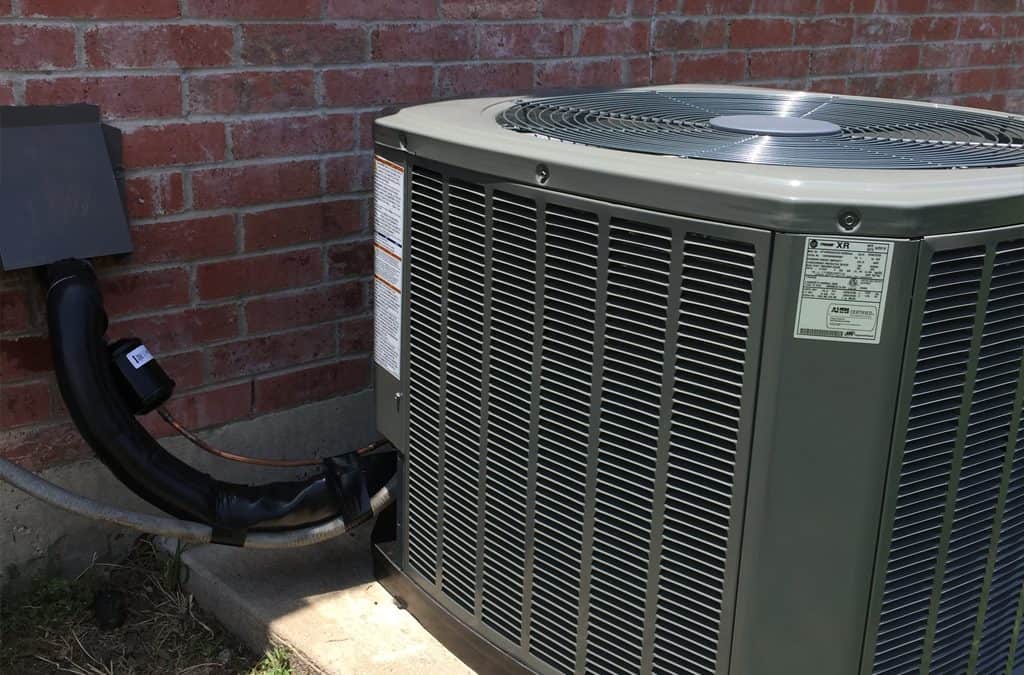
There are three main types of heat pumps, and each type utilizes a different source of heat. It is worth noting that variations of each of these systems are also available, so you might encounter an air-source heat pump that runs on gas instead of electricity.
Let’s take a closer look at different types of heat pumps:
- Air-source – This is by far the most common heat pump type that utilizes the outside air to regulate the room temperature. It features an outdoor unit called a heat pump, and an air handler that is installed indoors. These two components can be connected with a duct system, but they’re also available as ductless mini-splits.
- Water-source – These systems are more complex than air-source heat pumps because they feature a network of pipes that are submerged in a river or a pond. This type of heat pump offers more consistent heating because the water temperature doesn’t oscillate throughout the year as much as air temperature. Whether or not you can install this system in your home depends on its proximity to a relatively large body of water.
- Geothermal-source – Installing heat pumps that rely on geothermal sources of heat is often only possible during the initial stages of the building construction. Ground source heat pumps contain a complex system of pipes that are available in several arrangements suitable for different terrain layouts.
Types of refrigerants
The 3-ton heat pump you choose can have an R140A or R-134-a refrigerant, although models produced in the last few years utilize difluoromethane R32 and isobutane R(600A) refrigerants.
Neither refrigerant version is entirely environmentally friendly, although R32 and R (600A) contain fewer toxic chemicals that can damage the ozone layer. In addition, refrigerant leaks are one of the most common reasons why heat pumps malfunction, which is the reason why these systems require professional installation.
All units are factory charged, and you won’t have to recharge them unless a leak occurs. In this case, you’ll have to hire a licensed technician to detect the source of the leak and determine if it is safe to recharge the system.
This process is highly technical and you shouldn’t attempt to go through it by yourself, especially if you don’t have the necessary equipment. Read our guide to the best HVAC tapes if you need a quick and temporary solution for a refrigerant leak.
Powering heat pumps
With the exception of models that can utilize natural gas or solar energy as a power source, the vast majority of heat pumps run on electricity.
Connecting these systems to the utility grid is far more complex than just plugging the power cord into an electrical outlet, as you need to ensure that the system is wired properly.
The most energy-efficient models are Energy Star certified which indicates that they meet high energy efficiency standards. On average, a 3-ton heat pump will use between 2,000kW and 4,000kW of electricity per year.
Nonetheless, the actual power consumption of these systems depends on the climate, room layout, or the number of doors and windows in your home, which is why it is difficult to say if a heat pump can increase your home’s energy efficiency.
Controlling the speed of heat pumps
The unit’s compressor determines the speed at which a heat pump can operate and you can choose between three different compressor options
- Single-stage compressors – Units equipped with single-stage compressors operate at constant speeds, and you can’t increase or decrease their output. Heat pumps that utilize single-stage compressors are usually affordable, but they consume a lot of energy
- Dual-stage compressors – Allows users to choose the unit’s output level and adjust it to their current cooling or heating needs. However, speed adjustments aren’t nuanced as you can only choose from several speed options.
- Variable speed – These heat pumps offer complete control over the unit’s output levels and they’re highly energy efficient. Unfortunately, variable speed units are also more expensive than other versions of heat pumps.
The most important things to consider while choosing a 3-ton heat pump
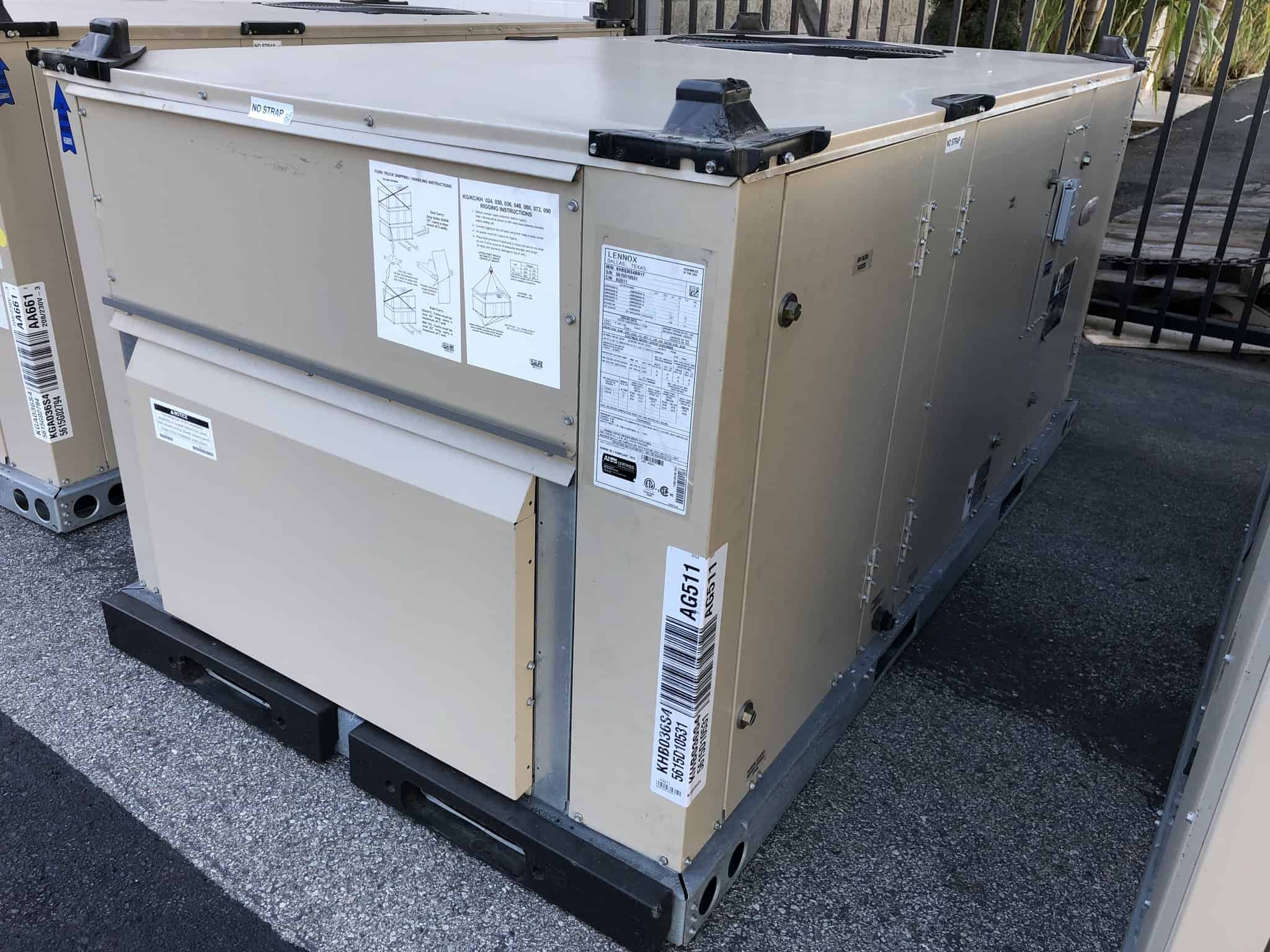
A single heat pump model can be available at different tonnages, so you can opt for a 1 ton, 3 ton, or 5-ton version of the same system. That’s why you need to know the size of the area you’d like to cover, as well as the layout of the space and the number of doors and windows in each room.
The maximum size of an area you can heat or cool with a 3-ton heat pump is 1.500sq/ft, but you might need a more powerful unit if your home has more than one floor or poor wall insulation.
It is advisable to consult with a professional installer while estimating the appropriate heat pump size for your home because you might not get an accurate assessment by calculating the BTU sizing on your own.
Let’s take a look at more factors you should consider while choosing a 3-ton heat pump.
Sound insulation features
The noise levels heat pumps produce are similar to noise levels produced by dishwashers, coffee grinders, and similar appliances. As they get older compressors can become very loud, so to avoid having to deal with this issue you should opt for a model that has excellent sound insulation features.
Some brands insulate heat pumps with sound compressor blankets, which reduces their noise level significantly. In addition, most manufacturers include this information in product descriptions, so finding out how loud a heat pump is shouldn’t be difficult.
The defrost mode
Low air temperatures can cause the moisture in the air to freeze on the heat exchanger. A defrost mode deals with this issue automatically by reversing the valve and forcing the refrigerant to run backward.
Most systems start a defrost cycle once the outside temperatures drop below 45F and you can’t use them to heat your home until the cycle is completed. Although all heat pumps feature built-in defrost modes, they’re not equally effective at detecting ice on coils.
That’s why you should learn as much as you can about the defrost cycle of the heat pump model you want to get.
Energy efficiency ratings
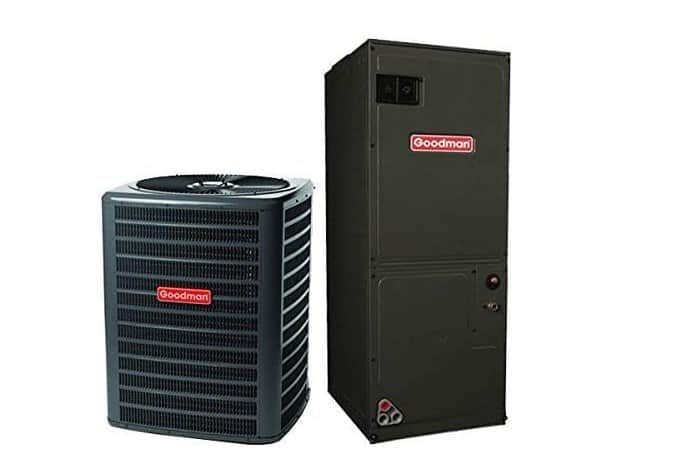
SEER and HSPF ratings indicate how much power the system is going to consume. An energy-efficient 3-ton heat pump should have a SEER rating between 18 and 21, and an HSPF rating that is above 10.
Also, you should keep in mind that SEER denotes the maximum efficiency rating and that the unit’s actual efficiency might be lower. Therefore, heat pumps that have SEER ratings higher than 20 are considerably more expensive than models with 14 or 16 SEER ratings.
Coverage area
You must choose the right size of a heat pump in order to maximize its energy efficiency. Systems that are not large enough for a particular space have to work longer to maintain the room temperature which in turn causes them to use a lot of electricity.
A 3-ton heat pump should enable you to regulate the temperature in spaces that have between 1.000 and 1.500sq/ft. In case a 3-ton unit is too powerful for your home, you can opt for a model that has slightly fewer BTUs.
Installation costs
Depending on the 3-ton heat pump model you want to get, you’ll have to spend between $700 and $3,000 on the equipment. You shouldn’t forget to factor the installation costs into the equation because you might have to spend more than $1,000 to get the unit up and running.
Attempting to cut costs by opting for DIY installation isn’t advisable, because a slight mistake can compromise the heat pump’s safety and effectiveness.
The advantages of 3-ton heat pumps
An excellent long term investment
Even though purchasing and installing a heat pump is expensive, making this investment will lower your monthly costs over the period of at least 5 to 10 years. Besides, most brands offer warranties that enable you to replace broken parts free of charge.
The possibility of creating a hybrid system
Some manufacturers produce furnaces that are compatible with the brand’s heat pump models. This enables you to create a hybrid system capable of both heating and cooling your home regardless of the weather conditions.
Air humidity control
A 3 ton heat pump can help you regulate air humidity levels in your home because it acts as a dehumidifier. Also, while running in the cooling mode, the unit eliminates moisture condensation.
The disadvantages of 3-ton heat pumps
Repair costs can be high
The components of highly efficient heat pumps are very expensive, and you might have to spend a significant amount of money to repair a malfunctioning unit.
Top 5 3 ton heat pumps
DAIKIN DZ20VC – The best Energy Star-rated 3 ton heat pump

The brand’s Inside variable speed compressor grants you complete control over the DAIKIN DZ20VC heat pump’s output. This model has a capacity that varies between 2 and 5 tons, which enables you to opt for the version that best fits your needs.
The Energy Star certified heat pump has the 21 SEER rating if it is properly installed and maintained, while its maximum HSPF rating is 10. The DZ20VC comes with a built-in muffler that lowers its noise level to 56dB and its cabinet features a sound-control top.
Pros
- 12-year limited warranty
- Equipped with the SmartShift Defrost Technology
- Utilizes inverter technology to prevent sudden temperature changes
- Great coverage range
Cons
- Spare parts can be expensive
- The compatible DAIKIN gas furnace must be purchased separately
York Affinity YZV – The quietest 3-ton heat pump
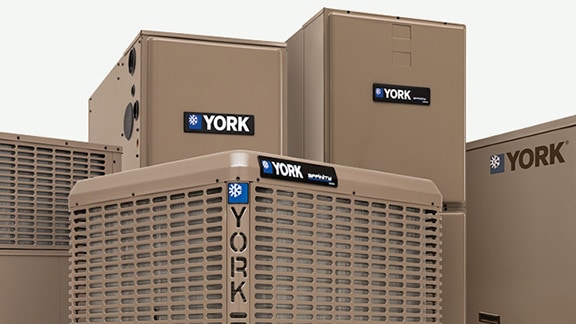
The Climate Set™ technology the York Affinity YZV uses enables you to adjust its output to dry, humid or moderate climates. The system utilizes a variable speed scroll compressor that allows for effortless speed adjustments and ensures that the unit performs at a high level for a long time.
The Affinity YZV’s swept wind fan blade, sound containment cloak, and composite pan ensure that the level of noise the system produces doesn’t exceed 54dB. This model utilizes a Hx™3 touch-screen thermostat that can be paired with smart devices via WiFi connection.
Pros
- High SEER and HSPF ratings
- The Demand Frost technology reduces the frequency of defrost cycles
- Low noise operation
- The output can be adjusted to the climate
Cons
- Expensive
- High system servicing requirements
RUUD EcoNet™ Ultra Series Heat Pump – The best variable speed 3-ton heat pump
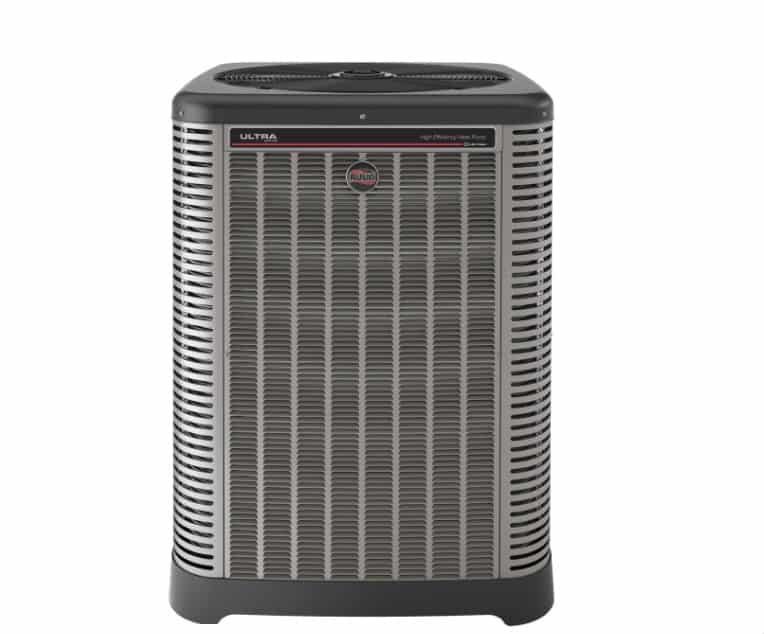
Besides controlling the room temperature, you can use the RUUD EcoNet™ Ultra Series Heat Pump to heat water in your household. The unit’s variable speed compressor utilizes modulating technology to lower air humidity and make intricate speed adjustments.
Moreover, the RUUD’s heat pump features an electronic expansion valve that regulates the flow of the refrigerant automatically. The model’s cabinet is made of corrosion-resistant materials that are not affected by humid weather conditions.
The PlusOne™ Triple Service Access feature allows you to reach the unit’s internal components by simply removing the corner of the cabinet.
Pros
- Quick and easy speed adjustments
- Equipped with the EcoNet™ Smart Home System
- Durable and sturdy cabinet with a powder coat paint finish
- Stress and vibration resistant tubing
Cons
- Not compatible with gas furnaces
- 10-year warranty includes only conditional unit replacement
Amana ASZC18 – The 3-ton heat pump with the best heating and cooling features
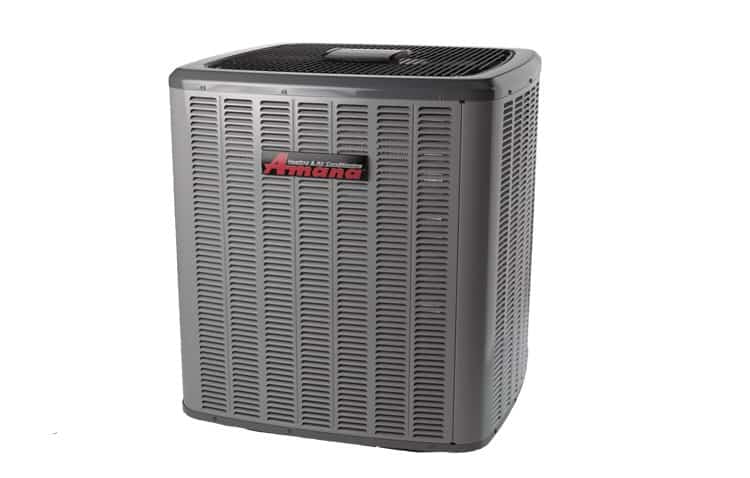
The Amana ASZ18’s Comfort Speed Technology lowers and increases the speed of the two-stage compressor and the condensing fan’s motor automatically based on the current room temperature.
The 3-ton heat pump also utilizes that Comfort Bridge technology that enables you to pair it with compatible Amana’s gas furnaces. Both of these features contribute to the model’s high SEER and HSPF ratings and prevent swift room temperature changes.
The ASZ18 has the Copeland ComfortAlert Diagnostic module that allows the installer to monitor its performance remotely.
Pros
- Compatible with Amana gas furnaces
- SmartShift technology vouches for safe and quick defrost cycles
- Built-in heater band prevents the refrigerant from freezing
- Great energy efficiency ratings
Cons
- Louder than similar models
- Limited speed adjustment capabilities
Comfortmaker Ion™ CSH6 – The best single-stage 3-ton heat pump
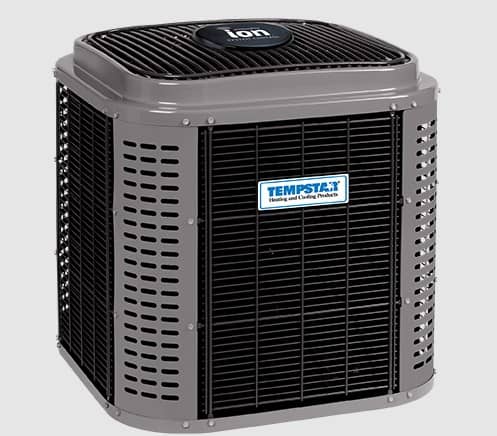
With a cooling capacity that varies from 1.5 to 5 tons, the Comfortmaker Ion™ CSH6 heat pump is suitable for both small and large spaces. The unit features a single-stage scroll compressor and a single-speed fan motor that ensure stable output.
Moreover, the CSH6 can switch between heating, cooling, and defrosting modes effortlessly depending on the current room conditions. The unit also has the Quiet Defrost feature that ensures that the defrost cycle is noiseless.
The Ion™ System Control allows you to connect the unit to a smart device and make all the necessary adjustments remotely.
Pros
- Utilizes a refrigerant that doesn’t deplete the ozone
- Intelligent diagnostics feature
- Changing modes is easy
- Affordable price
Cons
- The unit’s speed can’t be changed
- High noise levels
Frequently asked questions about 3-ton heat pumps
Question: How long does the defrost cycle last?
Answer: The defrost cycle lasts between 5 and 15 minutes and it takes place only if the air temperature drops below 45F.
Question: Do solar panels reduce the costs of running a heat pump?
Answer: Yes, they do. A solar panel can lower the costs of using a heat pump by 40% on the yearly level.
Question: Can I use a 3-ton heat pump for heating?
Answer: Yes, you can, but only if you live in the region where temperatures during winter don’t go below 40F. In case you live in a cold climate you can use a 3-ton heat pump for heating by pairing it with a gas furnace.
Question: How often should I perform maintenance checks of a 3-ton heat pump?
Answer: You should perform maintenance checks of your 3-ton heat pump at least once per year.
Our verdict: How to choose the right 3-ton heat pump model?
Maintaining a constant temperature in your home doesn’t have to reflect poorly on your monthly budget. Installing a heat pump in your home will enable you to cut down on power consumption and keep your home pleasantly cool or warm.
A 3-ton heat pump is suitable for medium-sized homes as its maximum coverage area can’t exceed 1.500sq/ft. We recommend choosing the DAIKIN DZ20VC heat pump or the York Affinity YZV if you don’t live in a 2.000sq/ft home.
In case these two models don’t fit your budget, we suggest taking a closer look at the Comfortmaker Ion™ CSH6 heat pump. Which of the best 3-ton heat pump models are you going to choose?
Let us know in the comments or continue reading our guide to the best:
- R13 vs R15 Insulation Compared: What’s the Difference? - December 9, 2023
- Ruud vs Trane HVAC Systems Compared - December 9, 2023
- Senville Mini Split Review and Guide: Is It Worth Buying? - December 9, 2023

